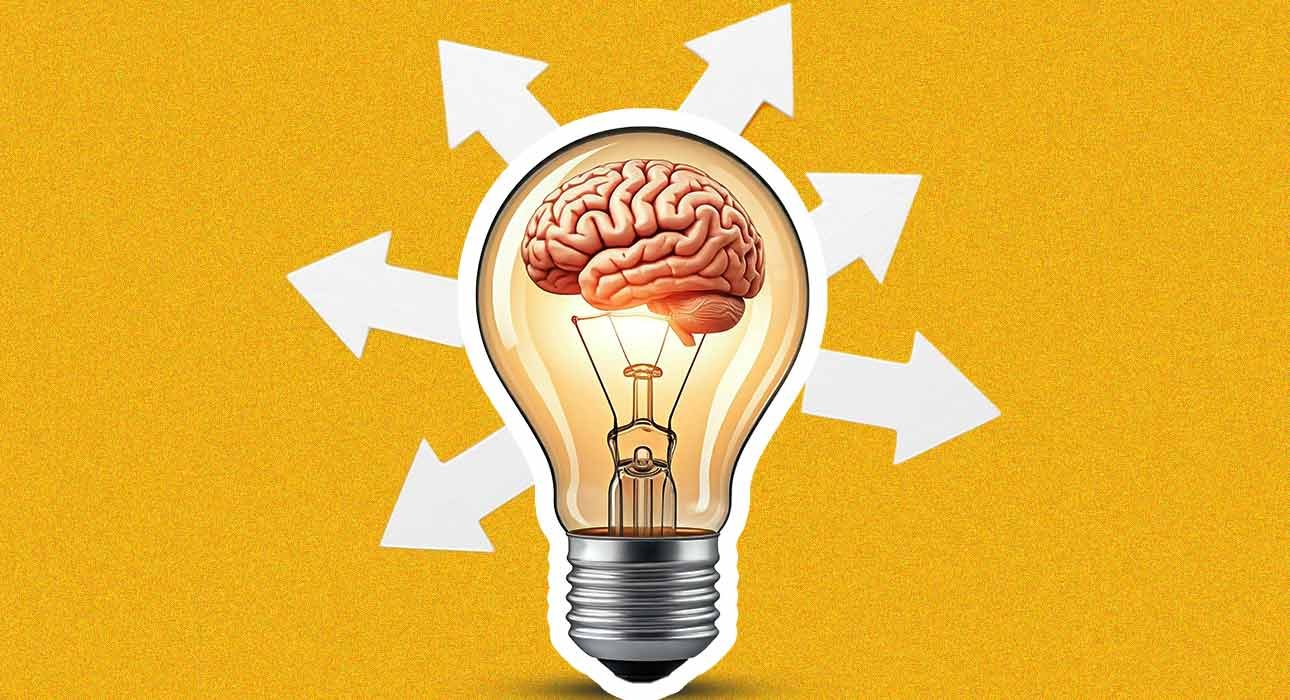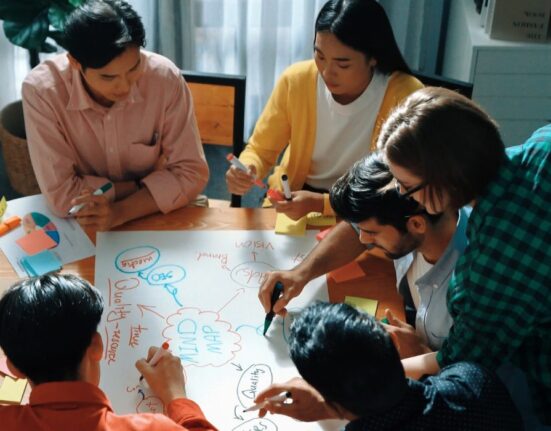The art of selecting one among several, popularly referred to as decision-making, is a critical mental function that is part and parcel of the human experience. The intricate process is highly influenced by individual preferences, experience, and environmental limitations. Neuroscientific studies suggest that cortical (deliberative) and subcortical (affective) brain regions are equally engaged in decision-making, each playing a different role in weighing risks, benefits, and emotional valences.
Decision neuroscience carefully examines the neural processes underpinning choice. Brain damage, particularly to the prefrontal cortex, always exhibits compromised decision-making abilities, leading to impulsive or suboptimal decisions (Moghadam et al., 2019). Clinical observations, e.g., evidence of frontal lobe damage disrupting even trivial daily choices with normal intelligence (e.g., “paralysis by analysis”), underpin the significance of specific brain structures. Further, contemporary computational models explain how individuals refine judgments based on sensor information and experience. These computational models are critical for detecting and avoiding cognitive biases that systematically distort judgment and behaviour.
Read More: Cognitive Biases That Secretly Control Your Decisions – And How to Outsmart Them
The Significance of Neuroscience in Unveiling Choice
An integrative understanding of neuroscience significantly enhances our comprehension of decision-making mechanisms through elucidation of their complex neural substrates. The field underscores the dynamic cooperation among diverse brain regions during judgment formation.
- Effects of Brain Damage: Damage to the frontal lobe, for example, can profoundly impair a person’s ability to make sound decisions (Moghadam et al., 2019). This proves to be an immediate causal connection between brain structure and mental function.
- Emotional Influence: A lot of research has proven that emotions and unconscious processes usually have a stronger influence on decisions than rational thinking alone. Most decisions are initiated by unconscious neural activity before they are consciously identified (Votel et al., 2013).
- Lessons from Interdisciplinary Research: The integration of neuroscience into decision-making studies provides valuable insights into cognitive biases and affective disturbances undermining rationality. Neuroeconomics, the new and emerging field, is a shining example of how interdisciplinary research can take apart the richness of human behaviour in many contexts.
Read More: How Emotions Play an Important Role in Decision-Making
The Prefrontal Cortex: The Executive Centre of the Brain
1. Executive Control and Rational Thought
The prefrontal cortex (PFC) is the primary neural substrate for executive function and logical reasoning along the continuum of decision-making.
- Certain subregions, such as the dorsolateral prefrontal cortex (DLPFC) and the anterior cingulate cortex (ACC), are indispensable for higher-order cognitive processing.
- They facilitate consideration of options by integrating working memory and reasoning capacity.
- They integrate prior experience with present goals to predict potential outcomes.
The DLPFC, in particular, is responsible for managing cognitive load and moderating impulsive reactions, enabling conscious rather than rushed decision-making. Results consistently indicate that damage to such regions can drastically impair decision-making ability (Rosenbloom et al., 2011), testifying to their essential role in maintaining rational trains of thought. Also, the activation of PFC is responsible for ambiguity resolution in decision-making, such as balancing between ambiguous options or dealing with ambiguous circumstances (Farrar et al., 2017). The impact of this executive function cascades far beyond individual decisions into deeply influencing public health and societal behaviour.
Read More: 10 Subtle Signs You Are Excellent in Decision-making, According to Psychology
2. Role in Decision-Making Complexity
Complex decision-making involves substantial activation of the prefrontal cortex (PFC) to consolidate information and weigh potential consequences, exhibiting its important role in optimising outcomes (Kennerley & Walton, 2011). It encompasses multiple value judgments that support handling hard choices.
- Imaging neurostudies reveal differential activity in various PFC regions during free-choice and value-based choices, each with an impact on risk and reward consideration (Funahashi, 2017).
- Knowing cognitive bias and emotion disruption is crucial for learning about how they influence day-to-day decision making (Redish et al., 2008).
Generally, neuroscience provides us with very important information about the complicated dynamics of complex decision-making, highlighting the need for holistic solutions to enhance processes.
The Affective Brain: The Role of Emotions in Decision-Making
Emotions significantly influence decision-making, normally introducing complexities that render processes of rational thinking challenging. The limbic aspect of the brain, particularly the amygdala, is responsible for deciphering emotional stimuli and memories. Individuals tend to look for emotional cues for guidance. For instance, the case of “Elliott,” whose postsurgical damage to the orbitofrontal cortex rendered him incapable of making personal and social decisions even when cognitive abilities were intact, highlights the significance of emotions (Donoghue, 2024).
Research suggests that emotions are “somatic markers,” providing a theory for anticipating potential outcomes by linking emotional feedback with risk and reward assessments (Jarrett, 2014). The reverse, on the other hand, can completely impair decision-making, promoting the potential for ill-judged decisions. An appreciation of this emotional function is key to understanding human behaviour and to explaining the basis of many decisions.
Habit Formation: The Basal Ganglia’s Influence
The basal ganglia are crucial in the formation of habits and keeping decision-making stable. In these structures, the striatum is a critical structure in the mediation of the transition from conscious behaviours to automatic responses after continuous practice. This kind of transition is required for habit formation that simplifies complex decision-making into effective and efficient responses based on past experiences without deliberation.
Basal ganglia circuitry regulates this learning process by storing reward values and strengthening feedback regarding past activities. The process promotes efficient behaviours aimed at maximising gains. Disruption in these circuits can be regarded as defective habitual action and stochastic decision-making, which happens in conditions such as Obsessive-Compulsive Disorder (OCD) and addiction (Thibaut, 2016). Besides, the basal ganglia also have a bidirectional relationship with the prefrontal cortex; while the PFC conducts higher-order cognitive processing, the basal ganglia are responsible for consolidating habituated responses and optimising responses in varied contexts.
Dopamine Pathways: The Reward System of the Brain
1. Nucleus Accumbens and VTA: The Reward Pair
The nucleus accumbens and ventral tegmental area (VTA) are prominent structures in the reward system of the brain and play an important role in decision-making, particularly reward choices.
- The nucleus accumbens deals with the motivational salience of rewards. It is responsible for the pleasurable experience of achieving a goal.
- It receives dopaminergic inputs from the VTA. This enhances positive outcome-related behaviours.
Increased activity in these areas is linked to reward anticipation and heightened motivation for reward-seeking behaviour (Harvard.edu, 2025).
The VTA also plays an important role in learning. It communicates the value of reward to the brain and makes decisions based on experience. Dopamine controls preferences and decision-making by highlighting the potential reward and risk, which modulates the brain’s estimation of risk and reward during choice (Dabir, 2024). Highly adaptive decision-making is the outcome of the synchronised activity of the structures.
2. Interplay among Motivation, Rewards, and Decision
Motivation and reward are permanently linked in the brain’s neural circuitry, with dopamine being a crucial neurotransmitter for anticipating and experiencing rewards and also having a great influence on decision-making. Science reveals unique neuronal patterns of activity associated with outcomes differing from anticipated ones (Harvard.edu, 2025), illustrating how the brain evaluates potential rewards related to presented options.
This process of evaluation occurs within a distributed brain network that includes the orbitofrontal cortex and the anterior cingulate cortex, both required for reward-based learning (Neubert et al., 2015). Furthermore, in reward uncertainty, specific brain areas respond differentially based on perceived danger. Knowledge of these processes accounts for the influence of motivation on decisions and highlights the flexibility of the brain in complex situations (Dabir, 2024; Guo et al., 2013).
Risk, Reward, and Uncertainty: The Decision Triad
1. Evaluating Alternative Outcomes
Decision-making involves explicit consideration of alternative outcomes, calling for the synthesis of experience and current information by the brain’s neural capabilities. Behavioural economics (Tomer, 2015) demonstrates that people are apt to exert themselves beyond their cognitive limits, leading to mistakes, particularly in stressful or emotional situations. In response to complexity, individuals employ heuristics—mental shortcuts—that sieve information for faster evaluations.
- Neuroscientific studies identify the prefrontal and parietal cortices. They play a crucial role in managing uncertainty and forecasting reward (Farrar et al., 2017).
- They are continuously assessing probabilities, and some neural activity (e.g., gamma oscillations) is associated with decision confidence levels (Xie et al., 2024).
- Additionally, variables like reward immediacy and personal risk tolerance impact choice perception (Korn & Bach, 2018). This is a sophisticated combination of logic and emotion in uncertain, imprecise situations.
Read More: Mental health and wellness: overcoming the uncertainty by finding inner peace
2. Risk-Taking: A Behavioural Economics Perspective
Risk assessment forms an integral part of decision-making in behavioural economics. Individuals are biased, which distorts their risk and reward perception, leading them to make inefficient decisions. Research has indicated that there is a bias toward overestimation of low-probability events and underestimation of high-probability events, thereby leading to distorted responses to perceived risks. Emotional states, such as elevated anxiety, have an additional influence on distorting risk assessments, leading to risk-averse behaviour (Tomer, 2015).
- Loss aversion, where the psychological impact of a loss is greater than that of an equal gain, greatly impacts decisions under uncertainty (Guo et al., 2013).
- Cognitive biases like anchoring and framing effects further complicate risk interpretation.
- Neurobiological findings pinpoint certain brain regions involved in risk assessment, where the amygdala evinces responses to perceived danger, pointing to the profound complexity of risk-taking behaviour (Sacré et al., 2019).
Cognitive Biases and Irrational Decisions
1. Common Cognitive Biases Influencing Decision-Making
Cognitive biases influence human decision-making greatly, which tends to lead to irrational decisions.
- The availability heuristic leads people to rely on readily available instances, thus resulting in a distortion of risk perception based on the latest events rather than facts. For instance, extensive coverage of aeroplane crashes in the media can lead to an irrational reluctance to fly.
- Another widely recognised bias is the anchoring effect, where initial information disproportionately influences subsequent decisions. For example, noticing that a jacket initially costs $100 and now sells for $70 might create a spurious impression of value, independent of its true value.
- Moreover, confirmation bias compels one to like information consistent with existing assumptions and dismiss contrary evidence, making it more difficult to make choices and cementing misconceptions (Votel et al., 2013; Korteling et al., 2023).
2. Emotional Interference: When Feelings Overrule Logic
Emotions are a very influential part of decision-making, with a bias towards emotions rather than rationality. Emotional reactions can overpower rational thinking, particularly when under stressful pressure that demands sudden judgments. For example, stress or anxiety can lead to the utilisation of emotional reasoning shortcuts rather than fact-checking.
These biases result in impulsive decisions, avoidance of profitable prospects due to fear, or angry behaviour without thought. Research shows that emotional interference distorts perceptions of risk and reward, and it is hard for individuals with emotional disorders to make level-headed decisions. This complex interaction between emotion and cognition reinforces irrational decision tendencies and suboptimal choices (Asana, 2025; Bossaerts & Murawski, 2015). Effective control of these emotional factors is crucial for effective rational decision-making.
Cognitive Dissonance: The Uneasy Mind
Cognitive dissonance refers to the psychological tension that results from conflicting beliefs, attitudes, or behaviours. It is commonly seen in everyday choice-making when decisions conflict with one’s values or expectations.
- For example, buying something luxurious despite knowing its cost burden can cause post-purchase rationalisation, such as highlighting its “long-term benefits” or “special characteristics” to reduce feelings of guilt.
- Similarly, deviating from a healthy diet towards junk food can be justified on the grounds of pleasure over health benefits.
As Kamal (2024) states, such internal conflict typically forces individuals to alter their beliefs or attitudes in a bid to restore psychological balance, bearing witness to the pervasive impact of cognitive dissonance on daily decisions and actions.
Read More: High Consumption of Fried Food May Lead To Anxiety and Depression
How can we improve Decision-Making
1. Implications of Brain Science
Neuroscience studies illuminate the complex interrelationships between various parts of the brain that drive decision-making. Among the most important discoveries is “decision acuity,” a general ability to make decisions that is separate from general intelligence. This acuity has special neural signatures, specifically linked with the prefrontal cortex and clear patterns of functional connectivity, showing stable relations throughout (Moutoussis et al., 2021).
- Various brain circuits work together while making decisions, as indicated by studies. Each of them has specialised duties: weighing options, recalling experiences, and anticipating results (Hathaway, 2019).
- Furthermore, human brain region observations directly indicate that decisions are derived from subtle representations rather than simplistic binary decisions, which enable adaptive decisions in humans (Xie et al., 2024).
These insights underscore the intricacy of decision-making and the importance of understanding brain dynamics to maximise cognitive abilities.
2. Real-World Applications to Further Improve Decision-Making
Neuroscience offers real-world methods to better decide.
- Beat Decision Fatigue: Cut down on unnecessary daily choices. Establishing habits to cut down on decisions about petty matters, as practised by Obama, saves mental resources for crucial decisions (Deloitte Insights, 2025). This method saves intellectual strength for important activities.
- Guide Interventions: Understanding the neural basis of decision-making can guide interventions for individuals with addiction or impulsive disorders, essentially turning them into better decision-makers (Dabir, 2024).
- Foster Interdisciplinary Collaboration: Creating environments that foster collaboration between disciplines—such as neuroscience and behavioural science—can stimulate innovative solutions to improve decision-making in all sorts of contexts (Dreher & Tremblay, 2017).
- Practice Self-Regulation: Self-regulation and mindfulness practised regularly also increase self-control in difficult situations, making it simpler to make difficult decisions.
Read More: Self-regulation Tips for People with Anxious Attachment
FAQs
1. What is decision-making according to neuroscience?
It’s how your brain picks from options for the best outcome. Both logical and emotional brain parts activate, weighing risks, rewards, and experiences. Damage to areas like the prefrontal cortex can severely impair this core cognitive function, leading to poor choices (Moghadam et al., 2019).
2. How does the prefrontal cortex influence our decisions?
The prefrontal cortex (PFC) acts as your brain’s CEO, overseeing executive functions and rational thought. It manages impulses, assesses choices, and merges past experiences with goals to predict outcomes. This is crucial for making deliberate, not hasty, decisions (Rosenbloom et al., 2011).
3. How do emotions impact the way we make choices?
Emotions heavily influence decisions, often overriding logic. The limbic system, especially the amygdala, processes emotional signals that guide us on potential outcomes. A lack of emotional input, as seen with certain brain damage, can severely impair sound judgment (Donoghue, 2024).
4. Can you explain common cognitive biases affecting decisions?
Cognitive biases distort choices. The availability heuristic over-relies on easily recalled examples. Anchoring over-influences decisions with initial information. Confirmation bias favours data supporting beliefs. These mental shortcuts often lead to irrational outcomes, despite objective facts (Votel et al., 2013).
5. What is cognitive dissonance in simple terms?
Cognitive dissonance is that uncomfortable mental tension when your beliefs, attitudes, or actions contradict. To ease this unease, you might change your beliefs or justify your choices. For instance, buying a luxury item then convincing yourself it has “long-term benefits” to reduce guilt (Kamal, 2024).
References +
Michael H. Rosenbloom. M.D., Jeremy D. Schmahmann. M.D., Bruce H. Price. M.D (2011). The Functional Neuroanatomy of Decision-Making. https://psychiatryonline.org/doi/pdf/10.1176/appi.neuropsych.11060139
Zongjun Guo, Juan Chen, Shien Liu. (2013). Brain areas activated by uncertain reward-based decision-making in healthy volunteers. https://pmc.ncbi.nlm.nih.gov/articles/PMC4145940/
Danielle C Farrar, Asim Z Mian, Andrew E Budson, Mark B Moss, Ronald J Killiany. (2017). Functional brain networks involved in decision-making under certain and uncertain conditions. https://pmc.ncbi.nlm.nih.gov/articles/PMC5798459/
Kamal. (2024). The Role of Cognitive Dissonance in Decision-Making. https://www.ijnrd.org/papers/IJNRD2404071.pdf
Jean-Claude Dreher, Léon Tremblay. (2017). Decision Neuroscience: An Integrative Approach. https://www.sciencedirect.com/book/9780128053089/decision-neuroscience
Richard Johnson. (2023). Cognitive Dissonance in Decision Making: A Deep Dive into How Conflicting Beliefs Impact Choices. https://www.activehealthgroup.co.uk/post/cognitive-dissonance-in-decision-making-a-deep-dive-into-how-conflicting-beliefs-impact-choices
Sohrab Saberi Moghadam, Farid Samsami Khodadad, Vahid Khazaeinezhad. (2019). An Algorithmic Model of Decision Making in the Human Brain. https://pmc.ncbi.nlm.nih.gov/articles/PMC7149951/
Shintaro Funahashi. (2017). Prefrontal Contribution to Decision-Making under Free-Choice Conditions. https://pmc.ncbi.nlm.nih.gov/articles/PMC5526964/
Free Will and the Brain: Neuroscience of Decision-Making. (2025). https://catalog.precollege.brown.edu/detail/CEBN0937
Michael H Rosenbloom, Jeremy D Schmahmann, Bruce H Price. (2012). The functional neuroanatomy of decision-making. https://pubmed.ncbi.nlm.nih.gov/23037641/
John F. Tomer. (2015). Economic Decision Making: How Our Mind Works. https://www.nowpublishers.com/article/Details/RBE-0039
Sacré. Pierre, González-Martínez. Jorge A., Sarma. Sridevi V., Eden. Uri T., Kahn. Kevin, Gale. John T., Johnson. Matthew A., Niebur. Ernst, Fitzgerald. Zachary, Subramanian. Sandya, Kerr. Matthew S. D. (2019). Risk-taking bias in human decision-making is encoded via a right–left brain push–pull system | PNAS. https://www.pnas.org/doi/10.1073/pnas.1811259115
Rupa Gupta, Timothy R. Koscik, Antoine Bechara, and Daniel Tranel. (2010). The amygdala and decision making. https://pmc.ncbi.nlm.nih.gov/articles/PMC3032808/
Tao Xie, Markus Adamek, Hohyun Cho, Matthew A. Adamo, Anthony L. Ritaccio, Jon T. Willie, Peter Brunner, Jan Kubanek. (2024). Graded decisions in the human brain. https://www.nature.com/articles/s41467-024-48342-w
How the Brain Balances Risk and Reward in Making Decisions. (2025). https://hms.harvard.edu/news/how-brain-balances-risk-reward-making-decisions
Kate Donoghue. (2024). Emotional Decision Making: Hardwired and Helpful. https://law.temple.edu/aer/2024/09/07/emotional-decision-making-hardwired-and-helpful/
Sam Dabir. (2024). The Neuroscience of Decision Making. https://uwo.ca/se/thrive/blog/2024/the-neuroscience-of-decision-making.html
Neubert. Franz-Xaver, Sallet. Jérôme, Rushworth. Matthew F. S., Mars. Rogier B.. (2015). Connectivity reveals relationship of brain areas for reward-guided learning and decision making in human and monkey frontal cortex | PNAS. https://www.pnas.org/doi/10.1073/pnas.1410767112
Johan E (Hans) Korteling, Geerte L Paradies, Josephine P Sassen-van Meer. (2023). Cognitive bias and how to improve sustainable decision-making. https://pmc.ncbi.nlm.nih.gov/articles/PMC10071311/
Michael Moutoussis, Benjamín Garzón, Sharon Neufeld, Dominik R. Bach, Francesco Rigoli, Ian Goodyer, Edward Bullmore. (2021). Decision-making ability, psychopathology, and brain connectivity. https://www.sciencedirect.com/science/article/pii/S0896627321002853
Bill Hathaway. (2019). How the brain helps us make good decisions – and bad ones. https://news.yale.edu/2019/06/25/how-brain-helps-us-make-good-decisions-and-bad-ones
Florence Thibaut. (2016). The basal ganglia play a crucial role in decision-making. https://pmc.ncbi.nlm.nih.gov/articles/PMC4826768/
A behavioral understanding of the scarcity mind-set | Deloitte Insights. (2025). https://www.deloitte.com/us/en/insights/topics/leadership/scarcity-mind-set-improving-decision-making.html
Asana. (2025). Heuristics: How Mental Shortcuts Help Us Make Decisions [2025. https://asana.com/resources/heuristics
Christian Jarrett. (2014). The Neuroscience of Decision Making Explained in 30 Seconds. https://www.wired.com/2014/03/neuroscience-decision-making-explained-30-seconds/
Steven W Kennerley, Mark E Walton. (2011). Decision Making and Reward in Frontal Cortex: Complementary Evidence From Neurophysiological and Neuropsychological Studies. https://pmc.ncbi.nlm.nih.gov/articles/PMC3129331/
A. David Redish, Steve Jensen, Adam Johnson. (2008). A unified framework for addiction: Vulnerabilities in the decision process. http://redishlab.neuroscience.umn.edu/Papers/2008%20Redish-Jensen-Johnson%20BBS%20Addiction%20Vulnerabiltiies.pdf
Peter Bossaerts, Carsten Murawski. (2015). From behavioural economics to neuroeconomics to decision neuroscience: the ascent of biology in research on human decision making. https://www.sciencedirect.com/science/article/pii/S2352154615000881
Christoph W. Korn, Dominik R. Bach. (2018). Heuristic and optimal policy computations in the human brain during sequential decision-making. https://www.nature.com/articles/s41467-017-02750-3













Leave feedback about this